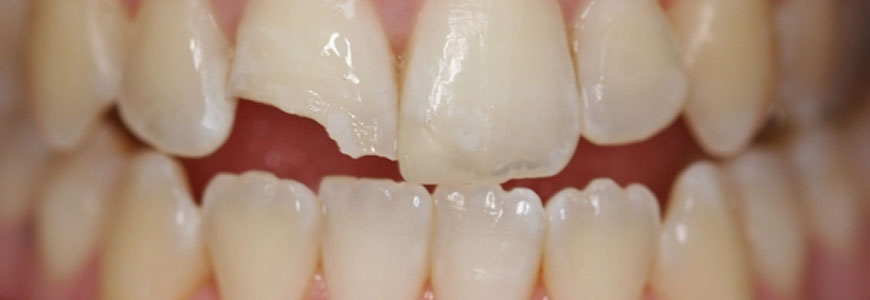
In spite of the teeth being remarkably strong, they can chip, crack, fracture or break. This can happen in many ways. When a tooth chips or breaks, it is not likely to hurt. But your tongue usually feels the sharp area often. Minor tooth fractures usually don't cause pain, but if a large piece of the tooth breaks off, it could hurt. This is because the nerve inside the tooth could be damaged. Then if it gets exposed to air, hot, cold food or drinks, it can cause extreme discomfort.
Pain and discomfort due to a broken or cracked tooth may be constant or may be intermittent. Many people feel pain when they chew because chewing puts that additional pressure on the tooth.
Left untreated, a chipped tooth can be a source of problem. Even though teeth are made of very hard material, abusive or harsh use can cause them to chip and crack. When you eat food that is very hard, such as corn kernels or ice, one wrong bite can cause your tooth to chip. People have a tendency to take it lightly, which adds to such incidents. Chip in a tooth means that the enamel covering of the tooth has been broken which indicates a breach of the tooth’s protective coating. Untreated, this will certainly lead to tooth decay because it is impossible to clean the inside of a chipped area of the tooth. The crack in the enamel allows disease causing bacteria to enter the tooth and cause decay from inside as well. In a matter of time the tooth will become infected seriously and this could lead to eventual loss of the tooth.
There are several types of tooth fractures and breaks, each of which requires a different treatment solution.

